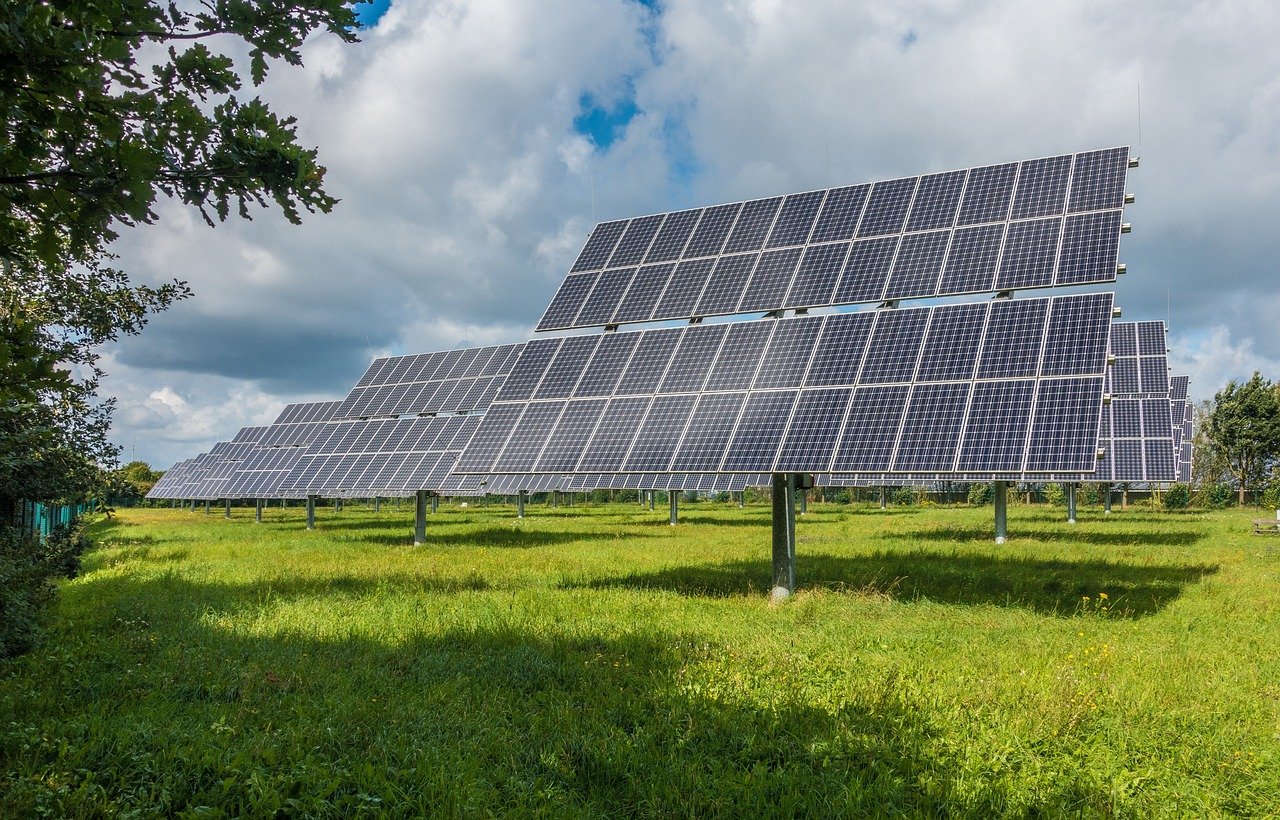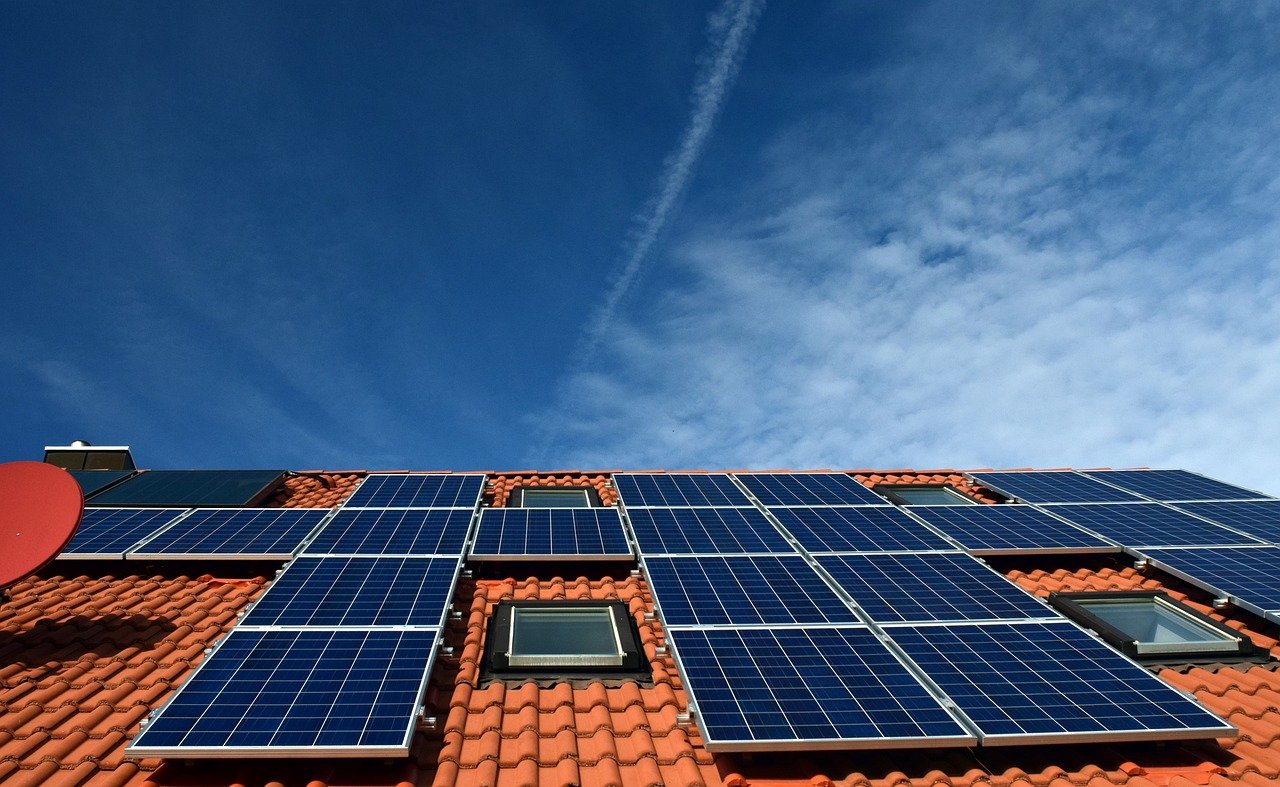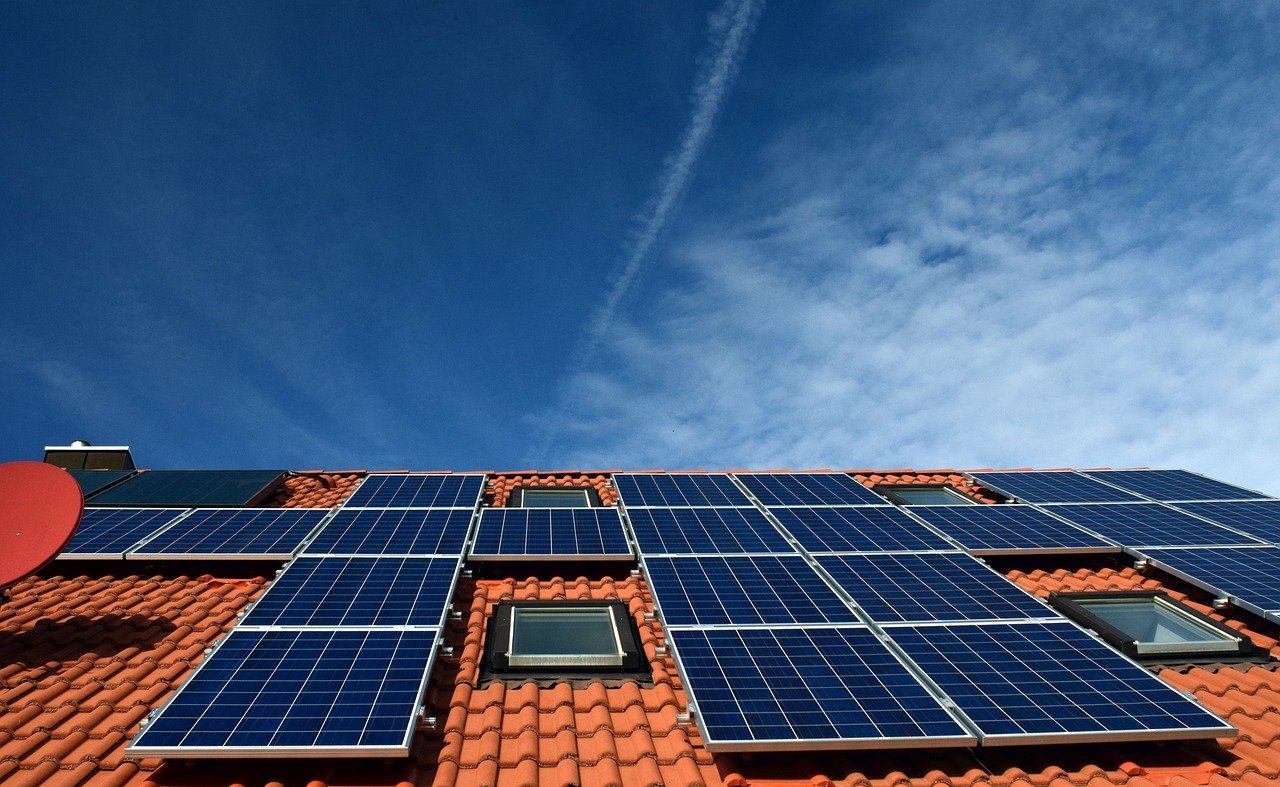In today’s era of alternative energy, solar panels become increasingly popular as a key source of renewable power for many households and businesses. A common question that pops up is, “How much space do solar panels need?” This article guides you to comprehend not only the physical space required for the installation but also the other factors influencing the space necessity. It aims to provide an insightful and practical look at the spatial characteristics of solar panels. So, if you’re considering making the switch to solar energy, this piece holds valuable information that could significantly support your decision.

Understanding Photovoltaic System Components
When creating a photovoltaic system, you should be excited to learn about the various components that work together to produce solar power. This composition is composed of solar panels, inverters, solar batteries, and solar controllers, each playing a crucial role in the system.
Overview of Solar Panels
Solar panels are the heart of your photovoltaic system. These panels absorb sunlight and convert it into direct current (DC) electricity. Each panel is made up of solar cells consisting of semiconductor material, usually silicon. When sunlight hits these cells, the energy knocks electrons loose and triggers an electric current.
Significance of Inverters
The electricity generated by solar panels is direct current (DC), while our homes and many appliances run on alternate current (AC). This is where inverters come in. Your inverter converts the DC electricity from your panels into AC electricity that you can use in your home or send back to the grid.
Importance of Solar Batteries
Solar batteries play a critical role by storing excess power for later use. On a sunny day, your panels might generate more electricity than you need. By storing this excess power in batteries, you ensure a continuous supply of energy during night-time or cloudy days when your panels aren’t actively generating electricity.
Role of Solar Controllers
Solar controllers, often referred to as charge controllers, regulate the power coming from the solar panels to the batteries. They prevent overcharging of batteries, ensuring optimum battery health and longevity. They are essential for maintaining the balance and efficiency of your photovoltaic system.
Fundamentals of Solar Energy Conversion
Understanding solar energy conversion boils down to knowing the science behind photovoltaic technology.
Solar Energy Basics
Solar energy harnesses the abundant, renewable energy of the sun. Solar panels absorb this energy, triggering a response at the atomic level. The harnessed energy is subsequently converted into electricity which powers our homes.
Process of Photovoltaic Conversion
Photovoltaic conversion involves transforming sunlight into electricity using solar panels. Photons from the sunlight hit the solar cells in a solar panel, knocking electrons loose from their atoms. When these electrons flow through the circuit, they generate electricity.
Efficiency Factors in Solar Energy Conversion
Numerous factors affect the efficiency of solar energy conversion. These factors include the quality and type of solar panels, the angle and direction of the sun, the amount of sunlight, the temperature, and the presence of any obstructions like clouds or dust which can reduce the amount of sunlight reaching the panels.
Exploring Various Types of Solar Panels
The type of solar panel you choose can significantly impact the efficiency of your energy conversion. Let’s delve into the three significant types: Monocrystalline, Polycrystalline, and Thin-Film solar panels.
Monocrystalline Panels
Monocrystalline panels are recognizable by their uniform, dark look, and the rounded edges of the cells. They are made from a single crystal structure, allowing electrons more room to move, resulting in a higher efficiency rate. These panels are also more expensive due to the manufacturing process.
Polycrystalline Panels
Polycrystalline panels are created from multiple crystal structures, giving them a unique, fragmented look, and usually have a bluer hue. They have slightly lower efficiency than monocrystalline panels but come at a less expensive rate.
Thin-Film Solar Panels
Thin-film panels are made by placing a layer of photovoltaic material on a solid surface, like glass. They are the least efficient of all the types but are simple to produce and can be cheaper. Their aesthetic appearance and flexibility make them popular in certain applications.
Comparison of Solar Panel Types
When comparing the panel types, consider your priorities. If efficiency is your top concern and budget isn’t a factor, monocrystalline panels are the most suitable. For a balance between cost and efficiency, polycrystalline panels are the way to go, while thin-film panels provide the best aesthetic and flexibility.
Factors Influencing the Space Required for Solar Panels
The space required for solar panels is dependent on a series of factors. Understanding these can help you make the most of your available space.
Influence of Energy Demand
Your energy demand is directly proportional to the number of solar panels you need. The higher your energy consumption, the more solar panels you will need, thus requiring more space for installation.
Impact of Local Solar Exposure
The amount of sunlight your area receives, also known as solar exposure or insolation, is a significant factor. Areas with high solar exposure usually require fewer panels, thus less space, to meet power requirements.
Effect of Panel type on Space Requirement
The type of panel you choose also has an impact on space requirements. High-efficiency panels like monocrystalline panels generate more power per square foot, subsequently requiring less space compared to polycrystalline or thin-film panels.

Calculating Space Requirement for Solar Installations
Determining space requirements for solar installations requires understanding solar array size, panel count, and configuration, and the total area required.
Method for Determining the Solar Array Size
To determine the solar array size, start by calculating your home’s energy needs. Check your power bills to estimate your annual electricity usage and aim for a solar array that can generate that amount of power.
Working out Panel Count and Configuration
Divide your target energy output by the wattage output per panel to estimate the number of solar panels needed. This calculation provides an estimate for the panel count. As for configuration, it is largely determined by the shape and size of your roof or installation space.
Estimating the Total Area Required
Once you’ve determined the number of panels needed, you can estimate the total area required. Keep in mind that the size of the solar panel might vary based on type and model.
Impact of Solar Panel Efficiency on Space Requirements
Solar panel efficiency plays an essential role in determining space requirements.
Understanding Solar Panel Efficiency
Solar panel efficiency pertains to how much of the sunlight striking a panel is converted into usable electricity. Better efficiency means more energy is produced for the same amount of sunlight, thereby requiring less space.
Relationship between Efficiency and Space Utilization
The relationship between efficiency and space utilisation is inverse. The higher the efficiency of the panels, the fewer you will need, reducing the space required for your solar arrays.
High-Efficiency vs. Standard Efficiency Panels
By opting for high-efficiency panels you may require fewer panels to meet your energy needs, thus conserving your space. However, these panels tend to be more expensive. Standard efficiency panels, while cheaper, may require more room due to larger numbers.

Orientation and Tilt: Role in Optimizing Space for Solar Panels
Orientation and tilt play significant roles in optimizing your use of space for solar panels.
Role of Orientation in Solar Installations
In the Northern Hemisphere, panels should typically face south for maximum exposure to sunlight. Conversely, in the Southern Hemisphere, north-facing panels are most effective.
Significance of Tilt in Solar Panels
The tilt of your panels can significantly affect their efficiency. The ideal angle is one that matches the latitude of your location. An appropriate tilt ensures maximal exposure to the sun’s rays, therefore, increasing power production.
Balancing Angle and Space in Solar Installations
Optimizing your solar installation involves striking a balance between the angle of tilt and the amount of space available. You’ll want to aim for the best angle that will give you the most energy output without using up unnecessary space.
Overcoming Space Limitations for Solar Panel Installations
Space needn’t be an obstacle to installing solar panels. There are plenty of strategies to overcome space limitations.
Exploring Mounting Options
You have a variety of mounting options to explore. Ground-mounted panels, for instance, are an option if your rooftop isn’t suitable or big enough for solar panels.
Understanding Solar Trackers
Solar trackers are devices that orient solar panels towards the sun throughout the day. While they take up more space than fixed panels, they can increase the yield from your panels, thus requiring fewer panels in support.
Using Vertical Spaces for Solar Installations
Vertical spaces like walls can also be used for solar installations if your rooftop or land is limited. Vertical solar panels can be a creative and effective solution in urban areas.
Case Scenarios: Space Requirements for Different Types of Property
Different types of properties might need different amounts of space for solar installations based on size and power usage.
Residential Property Case Scenario
For residential properties, a typical home might need about 20 solar panels, requiring roughly 500 square feet of space. The actual number may vary based on power usage, climate, and type of panel used.
Commercial Property Case Scenario
Commercial properties often have higher energy demands due to more extensive usage, and hence require more solar panels. The exact space required will depend on business needs, building size, and types of appliances used.
Industrial Property Case Scenario
Industrial properties, with their high energy demand, will require a significant number of solar panels, and therefore, a substantial amount of space. Some industries have large, flat rooftops that can comfortably accommodate the required arrays.
Mitigating Factors That Impact Required Space for Solar Installations
Several mitigating factors can impact the space required for solar installations.
Shading and its Impact on Solar Panel Placement
Shading can significantly reduce the efficiency of solar panels. Therefore, even if you have an abundance of space, you’ll need to position your panels in a spot where they won’t be cast in the shade for most of the day.
Roof Shape and Condition in Solar Installations
The shape and condition of your roof also dictate the number of panels that can be installed. A flat, spacious roof might be able to accommodate more panels than a sloping or irregularly designed one.
Dealing with Space Constraints and Obstructions
You need to be creative when dealing with space constraints or obstructions. Consider alternatives like ground-mounted panels or vertical installations. Also, using higher efficiency panels can tackle the issue of space shortages.
In conclusion, installing solar panels requires a well-thought-out set of considerations, right from understanding the components of a photovoltaic system, solar energy conversion, selecting the right type of solar panels to weighing out the space requirements and mitigating factors. However, the pursuit of sustainable energy is always worth the effort. Happy solar power planning!
